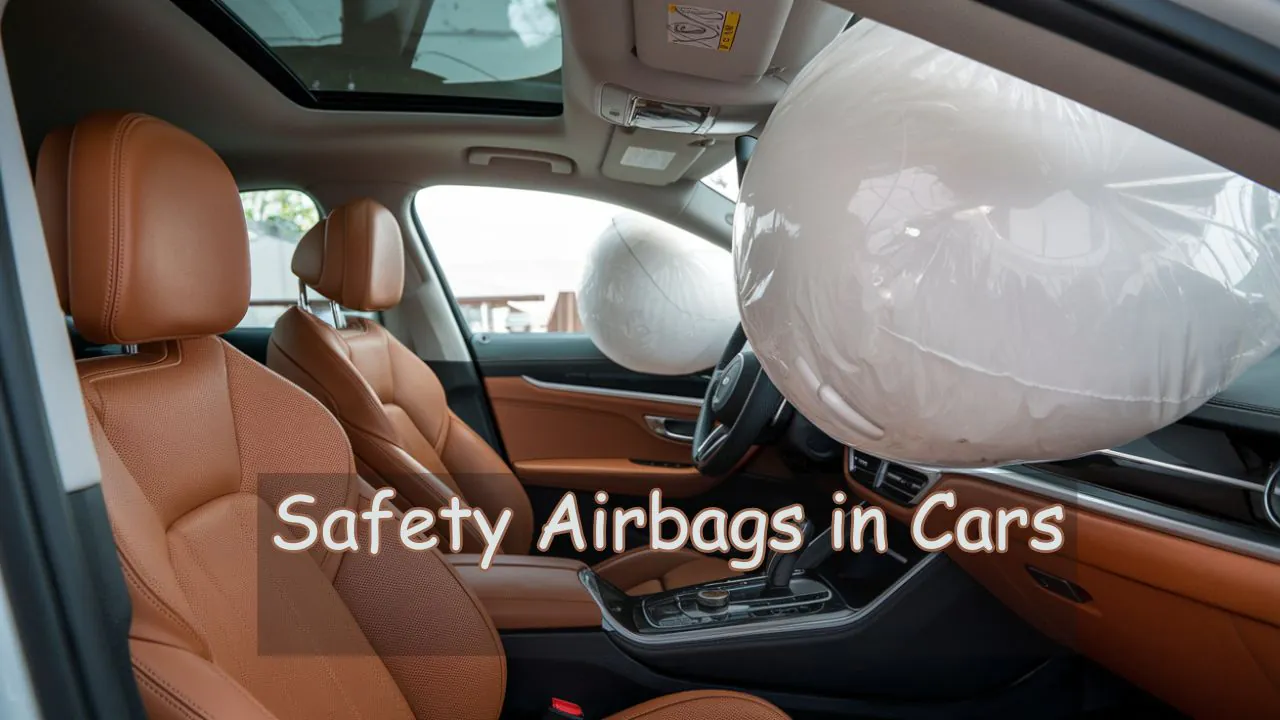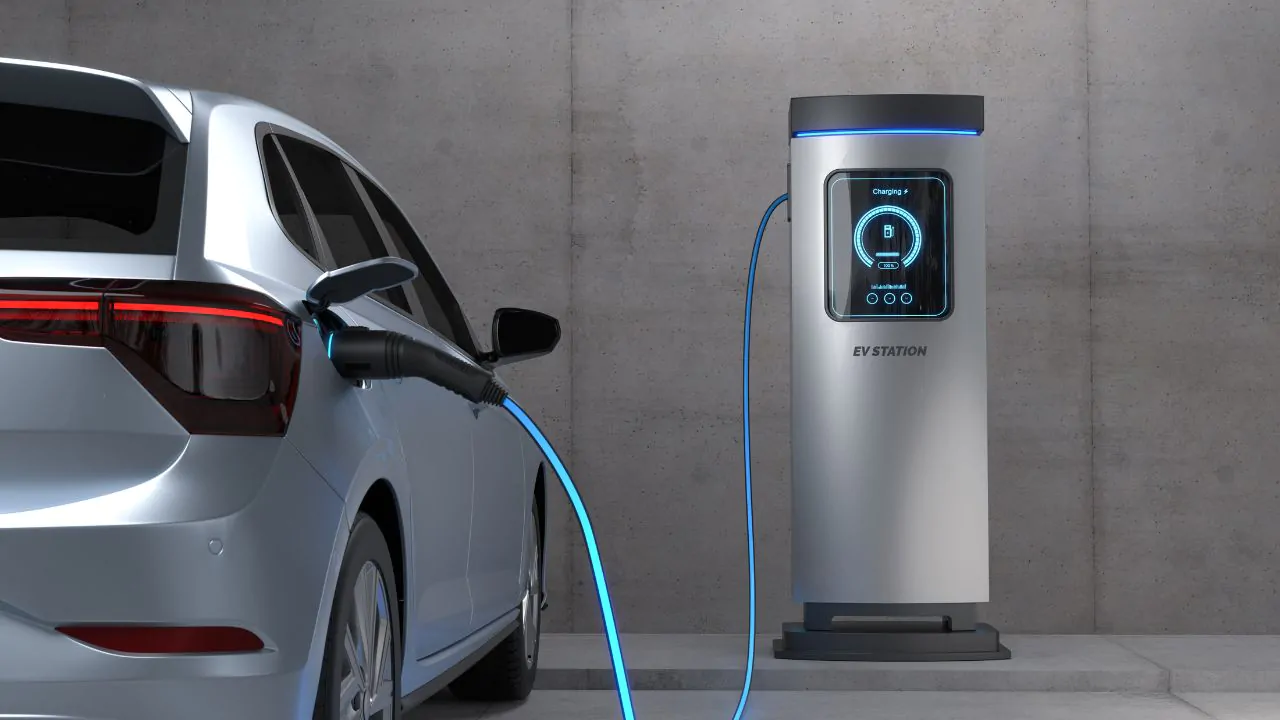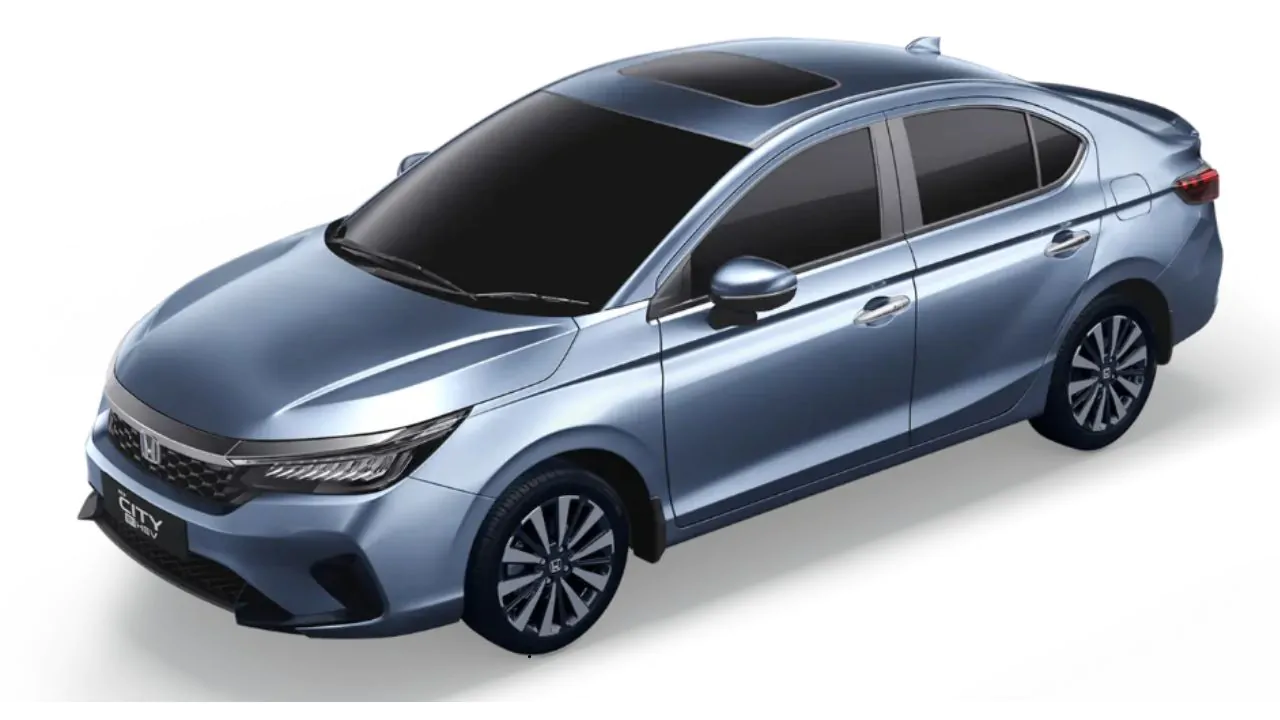Importance of Safety Airbags in Cars
Most people only occasionally look at the car safety systems as an annoyance to their driving experience. All of us understand the importance of having an airbag in a car, but only a few of us think about it until the need arises. Aiming to save your and your family’s lives in the event of an accident, airbags have revolutionized the global safety standards for automobiles. Be it a novice parent wanting to learn more about the best car protections for their child or a devoted car safety advocate wishing to get additional knowledge, in this guide; you will find everything regarding the car safety airbags you need.
Their history, classification, mechanism of operation, efficiency, and social groups that utilize airbags will be discussed, as well as their future. These systems are part of every car, and it is about time we acknowledge the role they have to play in making sure all lives are preserved, as we shall be examining them in detail.
The History and Evolution of Airbag Technology
The use of airbags in vehicles today in the advanced world is a common common. The tailoring of airbags, however, is a story of the fusion of technology with life-safeguarding mechanisms.
The origin of airbags can be traced back to the mid-1900s, amidst a slew of innovations during that period. However, their implementation on vehicles was not seen until the 1980s. The initial models were wrought with issues such as reliability and effectiveness when they were needed the most. By the 1990s, airbags were becoming a standard in combination with seatbelts. After that time, a myriad of tests began, and the technology began to evolve, which made these airbags much more effective and reliable than they were before.
Currently, airbags are mandated by law in a majority of regions around the world, making a significant contribution towards the enhancement of the safety of a vehicle.
Types of Airbags in Modern Vehicles
There is now a widespread mecha that deploys airbags in an assortment of scenarios. This is employed using a multi-stage IRA system. These are the most significant types:
1. Frontal Airbags
Almost all automobiles come equipped with frontal airbags that trigger during head-on collisions. The purpose is to ensure safety for the driver’s and the co-passenger’s head and chest injuries.
2. Side-Impact Airbags
The side door, along with the seats, contains massive side-impact bags; this reduces effects from injury occurring during a mid-collision. Most effective in restricting harm to the upper body midsection.
3. Curtain Airbags
Located on the upper side of the windows, these are used in head-on and sideways collisions on all sides of a car. These are used to cover the head region as well. These vertically positioned airbags also help prevent the occupants from being thrown out in extreme collisions.
4. Knee Airbags
Knee airbags are installed in the steering wheel or inside the dashboards; these are specifically designed to be used during car crashes to protect the knee. These airbags are only found in a few select cars that contain them in the driver’s seat.
5. Rear-Seat Airbags
Over a certain period that got advanced, specific, comfortable cars contain airbags that are used to cover the knee of a person who sits behind the driver. For families, this is a great option since most cars do not have these knee-smothering airbags for backseat use.
There is a particular guarantee with every hammer and never fold for any hands that with the set, they are all sealed together to form a set of hands.
How Airbags Work and Their Effectiveness
These cuffs are made out of a flexible material, which enables them to expand upon contact. This minimizes physical effects sustained by the passenger inside the car. This is what airbags are all about.
1. Preparation: Detectors are installed in varying places within the automobiles to check for rapid movement.
2. Execution: During testing of the airbags, if the sensor readings meet or exceed the set threshold, the inflators are activated to inflate the airbag.
3. Filling: The loader must remain full of compressed gas, which will subsequently be released into the airbag, preventing a freeze from forming on its inside.
4. Deflation: The dampers start to deflate after a second of deployment on the driver’s and the passenger’s sides to avoid asphyxiation.
Research indicates that airbags decrease the odds of the driver sustaining fatal injuries in frontal crashes by 29% and passengers in the front by 32%. They are, however, not adequate in themselves because they are most effective when used together with the seat belt.
Airbags and Specific Groups: Protecting Children and the Elderly
Airbags are developed with the intention to protect as many as possible. However, these preventative measures may have less impact on persons of certain sizes and ages. It is for this reason that trying to understand airbag use by different categories of population is critical.
Children
Children who sit in the front are at risk of being hurt whenever the bag deploys; the deployment of an airbag comes with a lot of force. As a safeguard for children:
- When driving with infants and toddlers, always secure them with rear-facing car seats.
- For children under 13 years old, always position them at the back.
- If a child needs to be seated in the passenger side front seat, make sure the front passenger airbag is switched off.
Elderly
Older people are more prone to injuries due to airbag deployment due to their weaker bone strength. In this regard, proper use of the seat, as well as compliance with safety measures when driving, should reduce the occurrence of injuries.
Training in the proper use of airbag systems guarantees their efficiency for all users, regardless of their age or stature.
Tips on how to Maintain Airbags and Ensure your Car’s Safety Features
Airbags do not need any daily checks, but they do need maintenance to ensure they are dependable. To achieve the best possible condition of the car safety features, follow these links:
1. Address the Airbag System Indicator Light: The airbag system warning light located on the dashboard is a telltale sign of the problem. If the light is illuminated, make repairs in order to correct the problem.
2. Don’t Make Aftermarket Alterations: The Installation of aftermarket non-original seats, dashboards, and steering wheels may obstruct airbag deployment from effectively working.
3. Deploy Airbag Replacement: Airbags that have been deployed should be replaced. These should not be assumed to work effectively a second time.
4. Consistent Servicing: It is important to make timely and regular visits to a licensed service center for inspections so that the condition of the sensors and associated systems is maintained at the optimal level.
The maintenance of your airbag system goes hand in hand with its performance, and the two are mutually exclusive and inseparable. Maintenance is imperative, as should anything go wrong, it could compromise you and your passenger’s safety when it is most important.
Airbag Safety Guidelines
Securing proper maintenance of your airbags is critical to ensure the prevention of any incidents or accidents in your vehicle. Here is a summary of important airbag maintenance pointers:
- Ask your car servicing provider to inspect your airbag system for any functional issues during a scheduled visit.
- If your dashboard is indicating an airbag light warning, this problem must be resolved quickly.
- Technical and mechanical safety standards should not be violated since they can enable airbags to be abused or disconnected.
- Seek assistance from specialists so that they can work on your car and ensure that the airbag deployment is not affected.
These are the basic rules that must be followed in order to ensure the best possible performance from your airbags in case of emergencies In the future.
Future Trends in Airbag Technology
New types of airbags are being developed and tested to improve passenger safety; looking back, airbags have improved a lot as technology has begun to develop:
1. 360-Degree Protection: The latest trend is to have airbags go off in every possible direction as soon as a passenger in a vehicle has a collision so all occupants are completely insulated.
2. Pedestrian Airbags: In some cars, any impact on a person is likely to be controlled more effectively with external airbags.
3. AI and Smart Sensors: Future systems may be designed to analyze a scenario and utilize AI for a higher degree of intelligent control. Therefore, airbag deployment will be adjusted more selectively for particular passengers rather than activating airbag deployment simply because an impact has occurred.
4. Customizable Airbag Inflation: Sensing the size and weight of passengers, the airbags may be designed to deploy a force that gives more control to both passengers and the airbags themselves.
New technologies will make automobiles ever more secure, but today’s airbag systems are already outstanding in terms of protection offered.
For today’s automobiles, why leave out Airbags
The air cells are much more than balloons full of air, and their sole purpose is to protect the occupants of the vehicle. They are integrated life-saving technologies that ensure that the occupants of the vehicle do not get severely injured during an accident. Airbags have come a long way from being invented to the current state of being a basic requirement in vehicles. If you are taking your kids to school or going on a road trip, these devices are very helpful in saving lives when needed the most.
For all drivers, it is definitely important to check if the airbag is functional or not because nobody is willing to risk their lives or those of their family members with a faulty airbag.
FAQs
Q.1 Seat Sensor- What is the cost?
Ans. Depending on the make and model of a car, the cost of replacing a seat sensor ranges between $200 and $600 when you add the labor charges.
Q.2 Are all those seated in the car protected by airbags?
Ans. The design of airbags restricts the people they protect to those in select seating positions, for example, the front driver and passenger seats. Back seat occupants are covered by side and curtain airbags. However, in most cases, the proper use of a seat belt can affect how effective these items are given a person’s size, seat, and setting.
Q.3 How effective are airbags in ensuring proper car safety?
Ans. The use of airbags acts as a barrier to cushion the users during a collision in a car, making it more safe and reducing the impact force experienced by the users. This is particularly through the minimization of the chances of severely injuring one’s chest, neck, and head in case of a high-speed collision.
Q.4 Did you know these details regarding airbags?
Ans.
- Following a car collision, airbags are integrated within the automobile to enable extremely fast deployment, typically within milliseconds after the incident.
- Regulatory authorities across the United States implemented legislation requiring the installation of frontal airbags in their passenger vehicles in 1998.
- They, for example, work with seat belts, not instead of them.
- The expected average speed at which some of the airbags open is around 160mph to 200mph.
- These with advanced airbags are programmable and, depending on the size and position of some reserve occupants, can make a different choice of airbag deployment.
Q.5 Does relying on airbags during a car collision provide adequate safety when compared to seatbelts?
Ans. No, airbags and seatbelts are oriented to assist each other, and it is not recommended to depend on any because none is safer.
Seatbelts secure individuals in their seats, while airbags lessen the impact force. Both of these devices greatly increase the chances of surviving an accident.
Q.6 Are airbags triable and testable before they are installed in a car? If yes, are there other vehicles or gadgets that use them?
Ans. Although they are quite helpful, airbags themselves are not a solution. Furthermore, automobile experts are working on various passive safety system technologies such as inflatable seatbelts and other head positioning safety strategies. Airbags have a proven efficacy as one of the most helpful automobile features today.
Q.7 Inside a car that has airbags installed, how should you position yourself?
Ans. You should position yourself where you are facing upwards, your back against the seat, whilst also being at least 10 inches away from the cover of the airbag and the base of your chest. Never recline far back, and always have your seatbelt on in the vehicle.
Q.8 In instances of a car crash, what is the speed that would require an airbag to activate?
Ans. In most cases, an airbag would deploy in an accident or crash that has moderate to slight damages in instances of crashing at speeds of 10 to 16 miles per hour, depending on the car and the type of airbag system it uses.
Q.9 What automobile comes with the most airbags fitted?
Ans. Luxury vehicles such as Mercedes-Benz and Teslas boast features such as more than 10 airbags, including side-positioned rear seat airbags.
Q.10 When can a child sit in the front with an airbag?
Ans. If the child weighs 80 pounds and it is determined that a seatbelt will be put on correctly across their shoulder, then they may be positioned in the front of the vehicle.
Always make sure to review your vehicle’s manual for further details that are vital to you.
Q.11 At what weight is the airbag activated?
Ans. Airbags are generally designed to deploy for passengers over 100 pounds, such as a passenger airbag system. However, newer technologies may vary with the weight detected by seat sensors.
Q.12 Is there an age limit for sitting in front seats?
Ans. The recommended age limit is 13, as the child is much safer sitting at the back regardless of their height or weight. Children below the age of thirteen should ideally sit in the back because the collision forces associated with the use of forward-facing seats and front airbags can be dangerous to them.
Q.13 Is there an airbag sensor in a driver’s seat?
Ans. Yes, the occupant restraint system in many modern vehicles has sensors inside the driver’s seat that are activated after the seatbelt is worn.
Q.14 What does the red light with the seatbelt and circle signify?
Ans. This warning light shows that the seatbelt has not been done while driving a car; sometimes, it may indicate a malfunction with the seatbelt and airbag systems.
Q.15 In a Honda, at what weight does the passenger airbag change from off to on?
Ans. Most Honda cars trigger the activation of all passenger airbags when the vehicle anticipates an occupant weighing at least 65 to 100 pounds. For more information, please refer to your vehicle manual.
You may read this: The Future of AI in Cars: Driving Towards Innovation
Disclaimer:
This blog post is intended for informational purposes only and does not contain any affiliate or promotional links. The content is provided solely to educate and inform readers about the safety of airbags in cars. We do not endorse or promote any specific brands, products, or services mentioned in the post. All opinions expressed are unbiased and based on research and available information at the time of writing. For specific advice or inquiries, please consult a professional or refer to your vehicle’s manufacturer guidelines.









